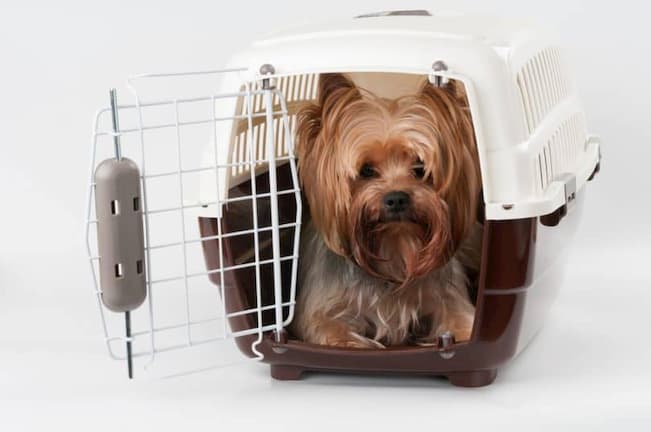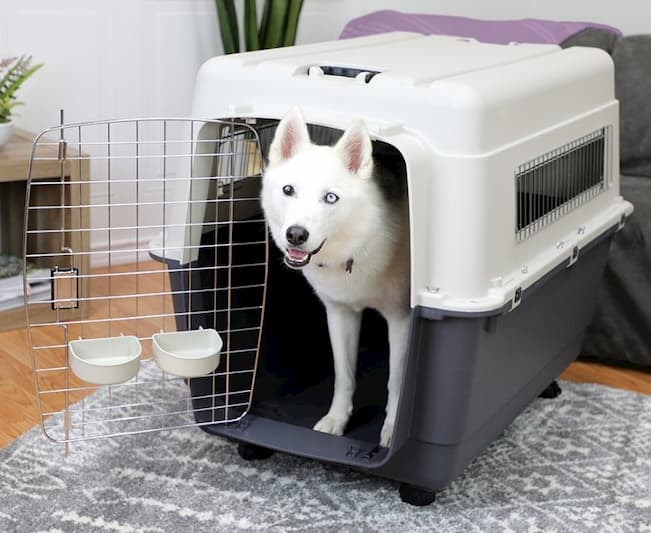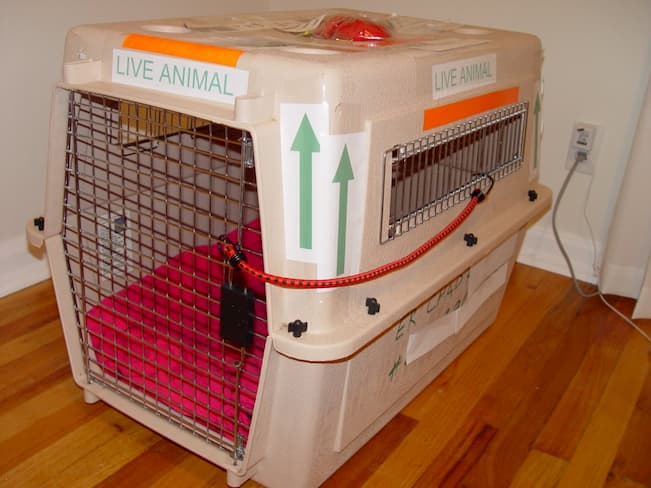So, you want to take your dog with you on your next travel adventure? That is a wonderful thing to do as a dog parent. You’ll share the memories and your dog won’t have to wait for you and wondering if you have left them for good.
However, travelling with a dog isn’t a piece of cake, unless you carefully plan your trip in detail and choose an airline approved dog crate. If you’re flying from one place to another, your dog won’t be able to go onboard with you but will have to stay in their crate downstairs. This may sound a bit harsh, but unless you have a very small dog whose crate can fit underneath your seat, then your dog will have to travel this way. Here’s what to consider when buying an airline approved dog crate.

Size
First of all, the size of the crate should fit the airline’s standards, but it should also be suitable and comfortable for your dog. Crates come in several standard sizes so it’s essential to pick the right one for your dog. If your dog is tall, it can travel in customized crates, as long as the size meets the airline’s standards.
Just like a dog’s bed should be comfortable, the crate too should allow the pet to lie, turn, sit and stand up inside comfortably. Your dog should be able to lay down comfortably with their paws extended. The dog shouldn’t have to bend their head to see out of the crate. Use a measuring tape to get the following measurements:
A: Measure from the tip of the nose to the base of the tail;
B: The height from the ground to the elbow joint while the dog stands;
C: The width of the shoulders;
D: From the top of the head to the ground when the dog is standing;
E: If the dog has erected ears, measure from the tip of the ears to the ground.
These measurements will help you choose the right size of crate for air travel. The length of the crate shouldn’t be less than the measurement of A+B. To calculate the crate’s width, use the formula C+ 2.5cm x 2. To calculate the height of the crate, you can use the formula D+7.6cm.

Material
One of the most important things about your airline approved dog crate is that it should be strong enough to endure all air travel challenges, without putting the dog in danger. The crate should be made of metal, fibreglass, wood or rigid plastic. Rigid plastic crates are the most popular and widely used. Make sure you get a model that has a leakproof and solid floor. The crate should not be collapsible.
It should have ventilation on three sides and the inside should be completely smooth and with no sharp edges. The door must be metal with all-around locking systems with pins that are at least 4cm above and below the door. The door must be strong enough to keep the dog safely inside. No jagged surfaces are allowed because they can easily injure the dog. You may come across crates with plastic fasteners but go for metal ones instead. Big crates should have forklift spacers on the sides. Smaller models should have handles on the sides so airline handlers can move it safely.
Accessories
Animal stickers in the right colours and suitable info that are globally recognized are the first things to look for when getting your airline approved pet carrier. These stickers show content details of the pet owner, animal transport company and relevant permits and certificates. Another super important accessory is an absorbent pad. Place it on the floor of the crate, so the pet can feel comfortable. It’s best to add your unwashed shirt or a blanket your pet loves, so they can be comforted by the smell. Don’t put any hard toys or other accessories inside that can be banned by the airline.

What’s Acceptable
Your dog crate should have a locking front door, a solid bottom, screws to secure the sides and hard plastic sides.
What Will Be Rejected
Collapsible crates and crates of metal wire aren’t acceptable. Dog crates with wheels may seem like a great idea, but airlines will remove the wheels before boarding. Don’t save money on crates. Buying a second-hand model is a huge risk; there may be traces of diseases. Also, the crate may have a crack or other issues that could easily lead to breaking. The bottom of the crate can’t have holes in it. It will compromise the structural integrity.
Top door crates are also not a good idea and won’t be accepted by the airline. Top doors can easily pop open. If your dog is large and strong, it can just stand up and open the crate. Plastic clip fasteners are also a bad idea – they won’t be accepted. They’re low quality and could easily open during the flight.
























